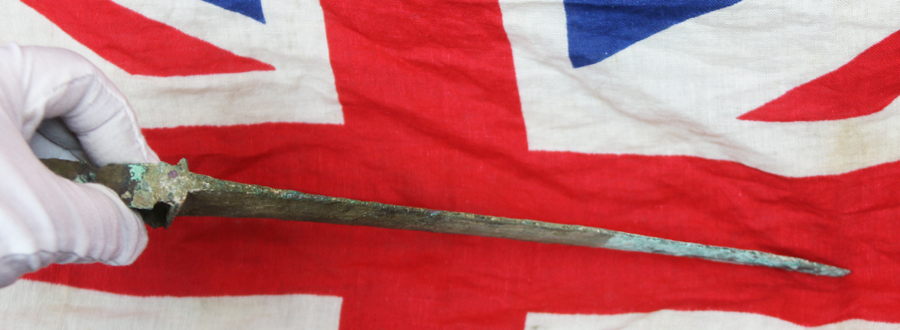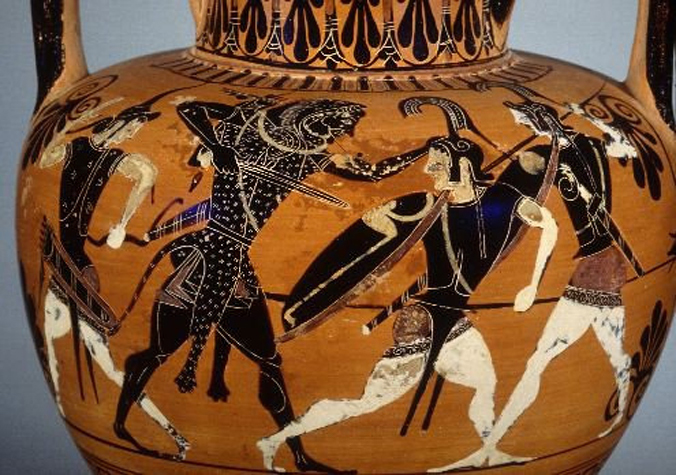A Superb Excavated & Fragmented Bronze Age Sword 3200+ Years Old. Seige of Troy Period
A very inexpensive pre-history period antiquity of immense beauty and age. A short sword or long dagger traded between the Eastern Mediterranean Scythians, Persians and Greeks during the the Ist millennium B.C. around 2700 to 3200 years ago. Made in bronze in the Western Asiatic region.
Western Asiatic bronzes refer to items dating from roughly 1500-500 BC that have been excavated since the late 1920's in the Harsin, Khorramabad and Alishtar valleys of the Zagros Mountains especially at the site of Tepe Sialk. Scholars believe they were created by either the Cimmerians or by such related Indo-European peoples as the early Medes and Persians.
Weapons from this region were highly sought after by warriors of many cultures because of their quality, balance and durability. Graduating blade with integral hilt, with open panels for organic inserts of wood, bone, or ivory, fabulous areas of crystallized malachite naturally aged blue/green patination.
The acinaces, also spelled akinakes or akinaka is a type of short sword used mainly in the first millennium BC in the eastern Mediterranean region, especially by the Medes, Scythians and Persians, then by the Greeks.
The akinakes was worn at the hip in an elaborate scabbard. The chape, generally a rounded triangle, could be made of bronze, chased gold or carved ivory, and probably lots of other materials. Just above the chape, a cord was tied around the scabbard, passed around the thigh and then through a slipknot next to the chape. The throat had a large tab, which at its own upper corner was tied through a hole in the weapon belt.
We show another most similar Bronze Age short sword or long dagger, in a similar state, excavated near Stonehenge, in the U.K. now in a museum collection. This piece is 17 1/2 inches long overall.
Every single item from The Lanes Armoury is accompanied by our unique Certificate of Authenticity. Part of our continued dedication to maintain the standards forged by us over the past 100 years of our family’s trading, as Britain’s oldest established, and favourite, armoury and gallery
Code: 23012
845.00 GBP







